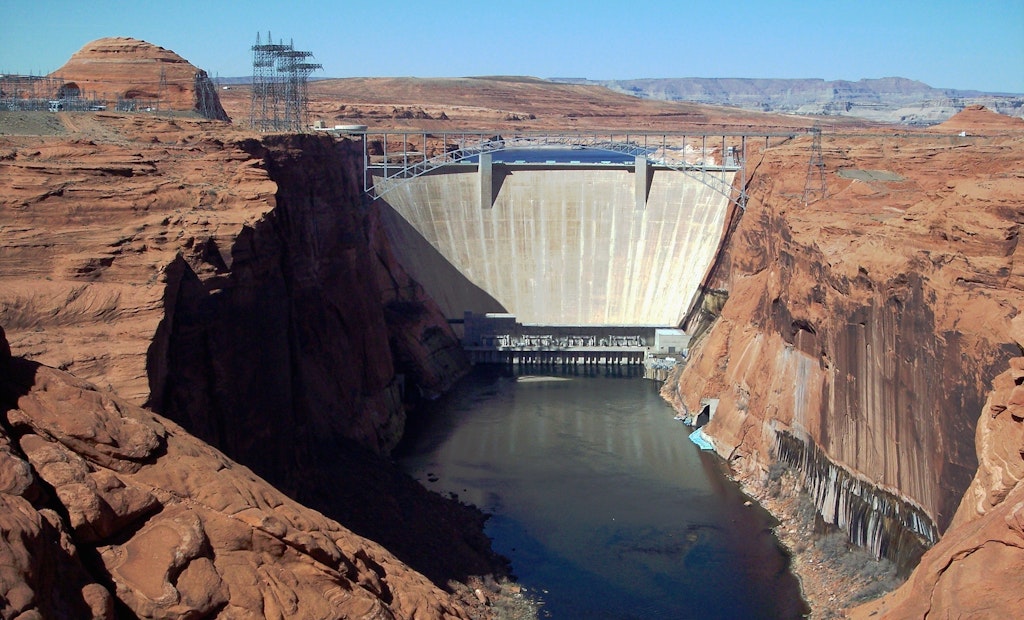
Glen Canyon Dam, substation (left) and bridge (in front of the dam) as seen from the south, near Page, Arizona. Image courtesy of Adbar, CC BY-SA 3.0.
The U.S. Bureau of Reclamation recently made an unprecedented move to protect water levels in Lake Powell on the Utah-Arizona border, announcing it would delay a water release that normally goes to Arizona, California and Nevada.
In order to keep levels in the lake high enough to continue producing hydropower, Reclamation will keep the more than 480,000 acre-feet in the reservoir.
Today, Lake Powell’s water surface elevation is at 3,522 feet, its lowest level since originally being filled in the 1960s. A critical elevation at Lake Powell is 3,490 feet, the lowest point at which Glen Canyon Dam can generate hydropower. This elevation introduces new uncertainties for reservoir operations and water deliveries because the facility has never operated under such conditions for an extended period. These two actions equate to approximately 16 feet of elevation increase.
Given the extraordinary circumstances in the basin, Reclamation is invoking its authority to change annual operations at Glen Canyon Dam for the first time. The measure protects hydropower generation, the facility’s key infrastructure, and the water supply for the city of Page, Arizona, and the LeChee Chapter of the Navajo Nation.
“Today’s decision reflects the truly unprecedented challenges facing the Colorado River Basin and will provide operational certainty for the next year. Everyone who relies on the Colorado River must continue to work together to reduce uses and think of additional proactive measure we can take in the months and years ahead to rebuild our reservoirs,” says Assistant Secretary of Water and Science Tanya Trujillo. “The Department of the Interior remains committed to addressing the challenges of climate change by using science-based, innovative strategies and working cooperatively with all the diverse communities that rely on the Colorado River. Thankfully, we have additional resources now as a result of President Biden’s Bipartisan Infrastructure Law that can aid us in our collective efforts.”
To protect Lake Powell, more water will flow into the lake from upstream reservoirs and less water will be released downstream:
• Under a Drought Contingency Plan adopted in 2019, approximately 500,000 acre-feet of water will come from Flaming Gorge Reservoir, located approximately 455 river miles upstream of Lake Powell.
• Another 480,000 acre-feet will be left in Lake Powell by reducing Glen Canyon Dam’s annual release volume from 7.48 million acre-feet to 7.0 acre-feet, as outlined in the 2007 Interim Guidelines that control operations of Glen Canyon Dam and Hoover Dam.





